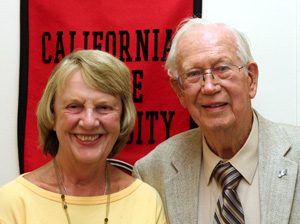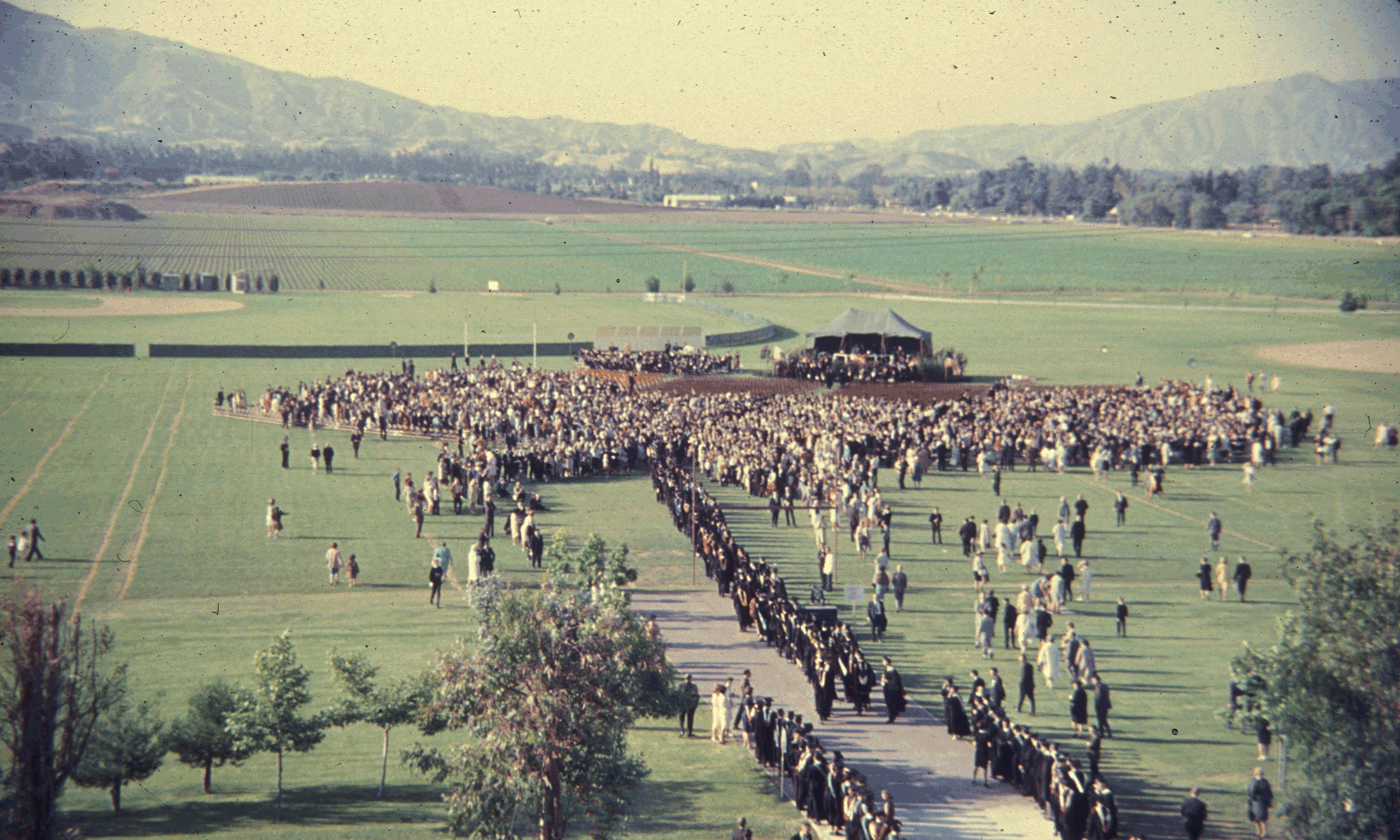
I was on the tag-end of the first wave [of faculty], or the front end of the second wave. And it was quite a thing to recognize it when I came on campus. There were a lot of people with fine backgrounds that were already in the nucleus of the faculty that was of San Fernando Valley State College. I was hired by a man by the name of Erling Erlandson. He was the founder of the Journalism department here, and he had come from USC, where he was on the faculty, and had been honored at USC as a distinguished professor in journalism. So he came here, and he indeed was a distinguished professor, and it was an honor to join Erl in that experience. So there were the two of us who were beginning the journalism program here.
. . .
I was hired by Ralph Prator, and Ralph Prator was a fellow who was easy to know. He was so outgoing. From the beginning, as a faculty member, I respected the administration, but was not in awe of the administration — they don’t know all of the answers. But Ralph was really a wonderful man to know, and he treated me as a friend, and well as a faculty member. But if I had opinions as a friend or as a faculty member, he was a good person to talk to.
. . .
(addressing Mrs. Stelck) You went as my guest at the 50th anniversary gathering of journalism alumni. It was on the pier on Santa Monica, in the shadow of the wonderful merry-go-round. One of my former students, Russ Bernard, owns a restaurant right adjacent to that merry-go-round in Santa Monica. So we went there for the 50th anniversary gathering. And — I don’t know how many — it seemed, hundreds of students, but in that noisy restaurant — I just stood there by the [bar], but the former students came round to shake my hand, and say how great it was to see me, and to my credit, I remembered them Sometimes I had a little help on their names, but, coming back, 50 years later, here are people and they’re — “what are you doing now?” Well, they were newspaper publishers, they were writers, they were any number of exalted positions — public information officers. . . I tell you, just a cross-section of journalists in this country were there. And it was just great, because I would recognize them, and then — “what are you doing?” and boy, I tell you, it was just wonderful.

